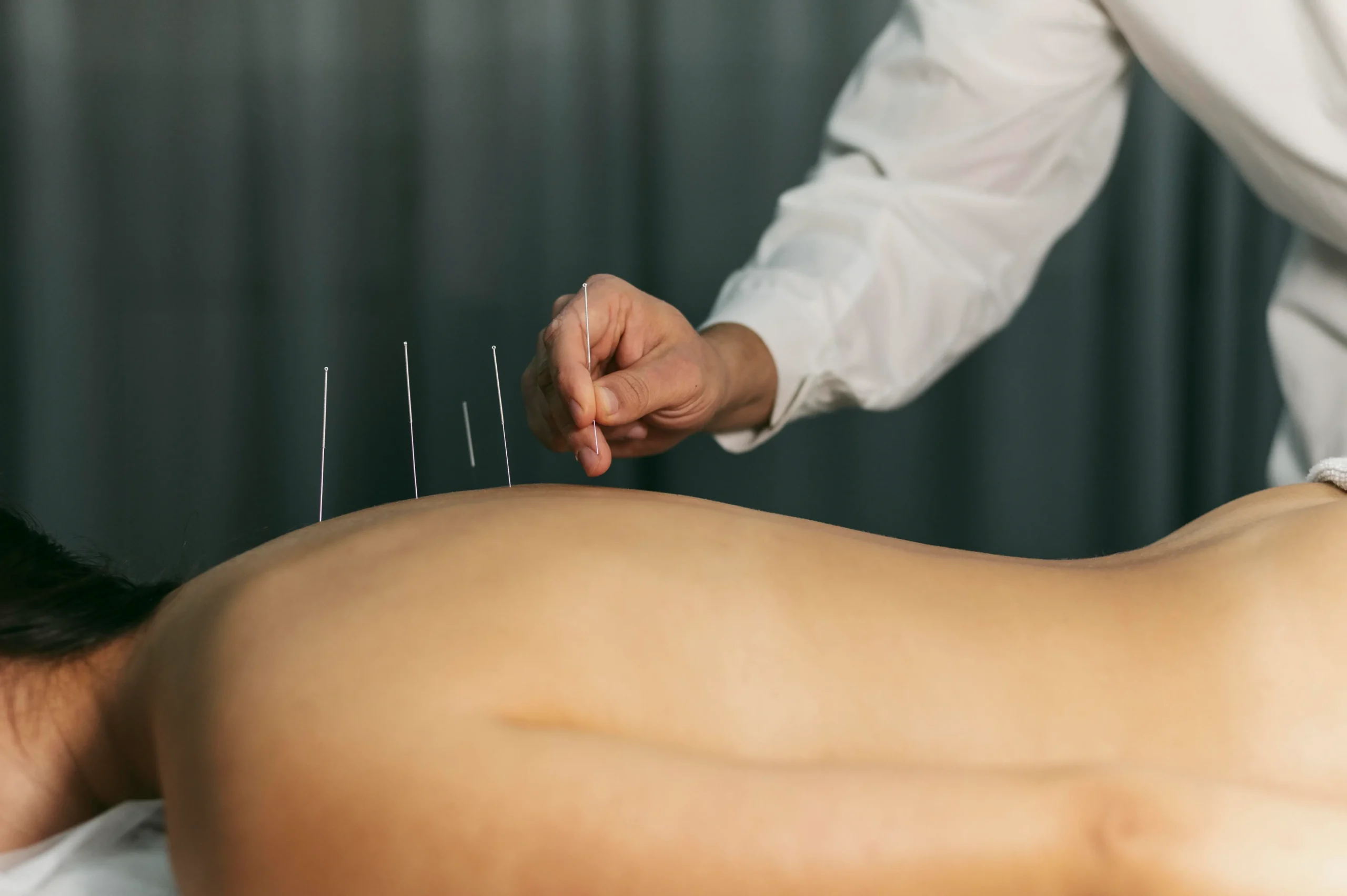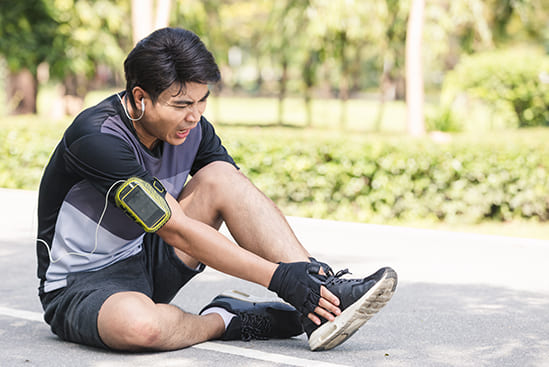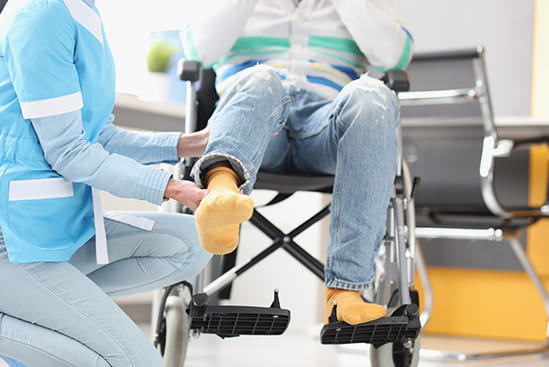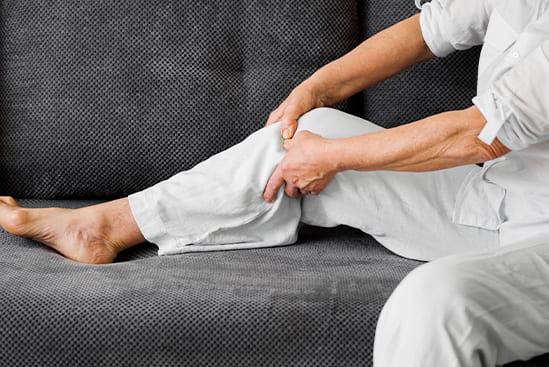
Synapse Physiotherapy
Introduction
If you’ve ever had long-lasting muscle pain or tightness, you may have heard about dry needling, a technique that uses fine needles to relieve pain and restore movement. It’s often compared to acupuncture because both involve inserting needles into the skin, but there’s a key difference: dry needling is a modern, science-based practice used by physiotherapists, while acupuncture is rooted in traditional Chinese medicine.
So, what exactly is dry needling? Is it safe? And how can it help with pain that won’t go away? Let’s explore five important things you should know about this powerful treatment option, especially if you’re wondering whether it could be the solution you’ve been looking for.
1. Dry Needling Focuses on Muscle Trigger Points, Not Energy Flow
Understanding the Main Difference
While acupuncture and dry needling may look similar on the surface both use extremely thin needles their purposes, methods, and philosophies are quite different.
Dry needling is based on modern Western medicine. It targets myofascial trigger points, tight bands or “knots” in the muscles that can cause localised pain or even refer pain to other areas. These trigger points are often the root cause of discomfort, limited mobility, or stiffness.
By inserting a sterile, fine needle directly into the trigger point, a trained physiotherapist can:
- Release tight muscle fibres
- Improve blood flow to the affected area
- Reduce nerve irritation
- Help the nervous system “reset” the muscle
In contrast, acupuncture is based on balancing the flow of energy (called qi) through pathways in the body known as meridians. Its focus is not on muscles, but on promoting holistic health by restoring energy balance.
So, the key difference?
- Dry needling = muscle and movement-focused
- Acupuncture = energy and whole-body balance
If you’re dealing with musculoskeletal pain, dry needling may offer a more targeted and effective approach than general treatments. By directly targeting trigger points in muscles, this technique can help relieve tension, reduce inflammation, and improve overall function.
2. It’s Especially Effective for Long-Lasting Muscle Pain and Injuries
Conditions That Benefit from Dry Needling
Dry needling is especially helpful when other treatments like massage, heat, or stretching haven’t brought lasting relief. It works deep within the muscle, reaching areas that hands or massage tools simply can’t.
Some common conditions treated with dry needling include:
- Neck and shoulder tightness
- Chronic lower back pain
- Headaches caused by muscle tension
- Sciatica (nerve pain from the lower back down the leg)
- Tennis elbow
- Plantar fasciitis (foot pain)
- Hip, glute, or IT band pain
- Poor posture due to muscle imbalance
- Recovery from sports injuries
Because it can break the pain cycle, reduce inflammation, and restore movement, dry needling is popular in sports physiotherapy. Athletes often use it to speed up recovery, reduce muscle tightness, and prevent future injuries.
3. It Might Feel Strange but Only for a Moment
What You Can Expect During and After a Session
One of the most common questions people ask is: Does dry needling hurt?
The honest answer: It can feel unusual, but not painful for most people.
Here’s what to expect:
- Needle Insertion: The needle is very fine and goes in quickly. Many people don’t feel it at all, or just feel a tiny pinch.
- Muscle Twitch: When the needle hits a trigger point, the muscle may twitch or contract briefly. This is called a local twitch response and is a good sign it means the therapist found the problem spot.
- Sensation: You might feel a deep ache, heaviness, or mild cramp. These sensations are temporary and often followed by a feeling of release or lightness in the area.
- Aftercare: It’s common to feel sore for a day or two, like after a tough workout. This is normal. Light movement, gentle stretching, or using ice can help relieve post-treatment soreness.
Many people notice a significant reduction in pain and increased mobility shortly after their first session. Most report feeling better within a day or two, with continued improvements over subsequent treatments.
Comparison: Dry Needling vs Acupuncture
Feature | Dry Needling | Acupuncture |
Based on | Western medicine and muscle science | Traditional Chinese medicine |
Main focus | Myofascial trigger points and muscle pain | Body energy flow (qi) |
Purpose | Reduce pain, restore movement | Balance energy, support healing |
Performed by | Certified physiotherapists | Licensed acupuncturists |
Research-supported | Yes, strong evidence for pain relief | Some support, especially for pain |
Both approaches have their place. If you’re seeking targeted relief for tight muscles, dry needling is likely the better fit. For a more holistic or energetic healing approach, acupuncture may be right for you.
Frequently Asked Questions (FAQs)
1. Is dry needling the same as acupuncture?
No. While both use thin needles, dry needling targets muscle trigger points using modern medical principles. Acupuncture is based on ancient Chinese theories of energy flow.
2. Does it hurt?
Most people feel little to no pain. You might notice a twitch or short cramp, but discomfort usually fades quickly.
3. What conditions can it help with?
Dry needling helps with chronic muscle pain, tension, poor movement, and issues like back pain, sciatica, tennis elbow, and more.
4. Who should perform it?
Only trained and certified physiotherapists. At Synapse, our team is highly experienced in safe, effective dry needling techniques.
5. Can I combine it with other treatments?
Absolutely. It’s most effective when part of a complete plan including stretching, rehab, and strength training.
Final Thoughts: Should You Try Dry Needling?
If your muscles feel tight, sore, or just “off” and nothing else seems to help, dry needling could be a game changer. It’s a safe, research-backed method that goes deep to treat the real source of pain, not just the symptoms.
At Synapse Physiotherapy, our expert team can help you figure out whether dry needling is right for you. We combine it with personalised rehab plans to support your recovery, improve your movement, and get you back to doing what you love, pain-free.
Not sure if it’s right for you? Book a consultation or explore our conditions we treat and treatment programs to learn more.
Tags :

Back & Neck Pain
Conditions such as stiffness, postural abnormalities and muscle overuse from prolonged desk work at the office or home is more prevalent than most would think. We provide the necessary tools to fix you up and educate you on ergonomics which can unload unnecessary stress.
- Spine & Core Rehabilitation
- Strength & Conditioning Programme
- Pain Management
- Biomechanical Assessment
- Sports Physiotherapy
- Group Class

Sports Injuries
Rolled ankles, jarred knees, impinged shoulders are few conditions in the plethora of sports injuries which can hamper performance and limit our enjoyment of sports. Physiotherapy not only treats the symptoms of these conditions but propels your overall fitness to greater heights.
- Strength & Conditioning Programme
- Pain Management
- Biomechanical Assessment
- Sports Physiotherapy
- Shockwave Therapy
- Group Class

Work Desk Injuries
Conditions such as stiffness, postural abnormalities and muscle overuse from prolonged desk work at the office or home is more prevalent than most would think. We provide the necessary tools to fix you up and educate you on ergonomics which can unload unnecessary stress.

Pre-Post-Surgical Conditions
Surgery involves going through preparation both before and after. Physiotherapists play a vital role in getting your body ready for surgeries with circulatory, breathing and strengthening exercises. After the procedure, let us be there for your recovery and rehabilitation, taking it one step at a time.

Scoliosis & Postural Abnormalities
The way we stand, sit, walk and sleep has influence over our posture and the overall balance of muscles controlling its alignment. A comprehensive screening can be done by our physiotherapists to detect abnormalities, which we will aid in correcting.

Neurological Conditions
Neurological disabilities such as stroke, nerve compression and neuropathies can be barriers for patients to live life to its fullest. We at Synapse are committed to help you overcome these hurdles by ensuring functional mobility and quality of life is at its optimum by providing the right treatment and exercises.

Osteoarthritis & Rheumatism
Joint degeneration and inflammation happens as the human body grows older, but that does not mean our way of life degenerates as well. Relief your joint pains with a joint effort together with your physiotherapist, who will provide pain-relief treatments and prescribe exercises for your wellbeing.

Conditions Relating To Elderly
Common conditions in the older age population include hips & knee pain, back & neck pain, osteoarthritis, rheumatism, fear of falling and many more. Aging and degeneration of bodily function is inevitable, but here at Synapse, we will help you live the best of your life.

Home Physiotherapy
We understand that some conditions or injuries can make it difficult to receive rehabilitation at our clinic be it mobility or transportation issues. Our objective is to provide you with the same high-quality physiotherapy services at home that you would receive in-clinic.
